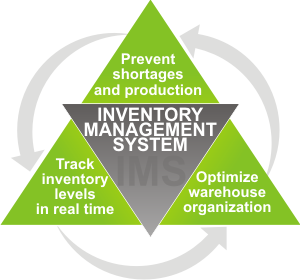Wasp Barcode Technologies: The Barcode Solution People
Proper Inventory Management Drives Economic Growth

Poor inventory management is one of the
primary reasons small businesses fail. According to the
State of Small Business Report, 46% of SMB’s with 11-500 employees don’t currently track inventory or use a manual inventory process such as tracking in Excel. This may be hard to believe, but ensuring inventory levels are accurate and adjusted based on demand is a
crucial process in running an effective business. Any errors made along the way could be detrimental and have business owners finding they “are burning money,” as stated by Marcus Lemonis on his CNBC show
The Profit.
| For forward-thinking businesses, finding a proper inventory management solution is on the agenda. Chief Supply Chain Officers surveyed for an IBM report published |
|

|
in 2014 said they are looking into inventory strategies to reduce costs. If inventory management is such a concern, why aren’t small business owners implementing better systems? Quite simply, they may think their business is still small enough to be tracked manually or have looked into different ways to automate, but
haven’t made inventory management systems a priority.
Unfortunately for business owners who think this way, skimming on this small cost only sets their companies up for failure. Many of the
substitute inventory management processes that rely on programs like Excel or Access are adequate when businesses are first starting out, but they aren’t recommended for future growth. These programs often require manual counting of stock where any mistake cascades through the rest of the supply chain. Additionally, once these errors are made, the programs make it difficult to identify and resolve.
 Optimize
Optimize
Strategies that optimize inventory management are crucial to a company’s financial well-being – especially when considering the overall health of the economy. When a company doesn’t meet stock needs, their consumer reputation is negatively impacted and, as a result, their business suffers. Unfortunately, as that business struggles, a standard business practice is to cut back on inventory. Because many small businesses struggle with inventory management, cutbacks happen often – creating a downward spiral in business cycles. In fact, a good predictor of an
upcoming recession is intense inventory cutbacks.
Growth Predictors
On the other hand, when companies build stockpiles of goods, those business owners are predicting growth in the coming months, which drives economic growth.
Because
sales have roughly kept pace with the higher inventories, companies will likely need to continue restocking their shelves to meet rising consumer and business demand. That should help to fuel faster economic growth as more factories crank up their production and the spending ripples through the broader economy.
Inventory management affects the health of a business and will often determine whether a business fails or prospers. In the long run, those successes and failures affect the overall economy. To continue driving economic growth, companies need a good inventory management system capable of effective analysis of supply and demand and
inventory turnover.
Prepare Now

Companies that want to grow need to
prepare for growth. Even though it is rarely a major topic of conversation, inventory management can be the make or break detail of small business. Finding an effective solution to this potential problem eliminates the chance of error and stops the
manual tracking of data, which also frees up workers to focus on more strategic responsibilities. Small business owners should research barcode business products, like
Wasp’s Inventory Control system, which offers data capture and custom inventory tracking.
By implementing simple and innovative inventory management, small business owners are optimizing forward-thinking business strategies that create growth. Instead of spending money to fix inventory problems, business capital can be used on growth opportunities for the company and the economy.
 Poor inventory management is one of the
Poor inventory management is one of the 
 Optimize
Optimize Companies that want to grow need to prepare for growth. Even though it is rarely a major topic of conversation, inventory management can be the make or break detail of small business. Finding an effective solution to this potential problem eliminates the chance of error and stops the
Companies that want to grow need to prepare for growth. Even though it is rarely a major topic of conversation, inventory management can be the make or break detail of small business. Finding an effective solution to this potential problem eliminates the chance of error and stops the 

